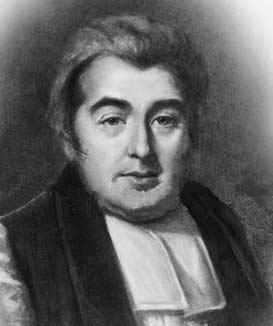John Brinkley (astronomer) facts for kids
Quick facts for kids
John Brinkley
FRSE
|
|
|---|---|
 |
|
| Born | 1763 Woodbridge, Suffolk
|
| Died | 14 September, 1835 Dublin, Ireland
|
| Alma mater | University of Cambridge (BA, MA) |
| Known for | Research works on astronomy and stellar formations |
| Awards |
|
| Honours | Fellow of the Royal Society of Edinburgh (FRSE) |
| Scientific career | |
| Fields | |
| Institutions | Trinity College Dublin |
John Mortimer Brinkley (born around 1763 or 1766 – died 14 September 1835) was a very important person in both science and the church in Ireland. He was the first Royal Astronomer of Ireland, which meant he was in charge of studying the stars for the country. Later, he became a Bishop of Cloyne, a high position in the church. He was also the leader of the Royal Irish Academy (from 1822 to 1835) and the Royal Astronomical Society (from 1831 to 1833). He won two major awards for his work: the Cunningham Medal in 1818 and the Copley Medal in 1824.
Early Life
John Brinkley was born in Woodbridge, Suffolk, England. He was baptized on January 31, 1763. His mother was Sarah Brinkley.
When he went to Cambridge University, records show he was 17 years old in August 1783. This suggests he might have been born a little later than 1763, possibly in 1766. He studied at Gonville and Caius College at Cambridge.
His Career
Scientific Work
John Brinkley finished his studies at Cambridge University in 1788. He was a top student, earning the title of Senior Wrangler and winning the Smith's Prize. He became a fellow (a senior member) of his college and received his Master of Arts degree in 1791.
In 1792, he became the second Andrews Professor of Astronomy at Trinity College Dublin. This important role also gave him the new title of Royal Astronomer of Ireland. He led the Dunsink Observatory from 1790 to 1827, where he focused on studying stars. He even wrote a book called Elements of Plane Astronomy in 1808.
For his excellent work, he received the Cunningham Medal from the Royal Irish Academy in 1818. In 1822, he became an honorary member of the American Academy of Arts and Sciences. He also won the famous Copley Medal from the Royal Society in 1824.
Brinkley made some observations about how certain stars seemed to move in the sky throughout the year. However, another astronomer named John Pond at Greenwich later showed that Brinkley's observations were not quite right.
Church Work
Besides his scientific career, John Brinkley also held many important positions in the church. He was ordained (became a priest) in 1791. In 1806, he became a prebendary at Elphin Cathedral and a Rector in Derrybrusk. Later that year, Trinity College Dublin gave him a special degree called Doctor of Divinity. He continued to rise in the church, becoming the Archdeacon of Clogher in 1808.
In 1826, he was appointed Bishop of Cloyne in County Cork. He held this high church position for the last nine years of his life. Even while serving as a bishop, he continued his scientific leadership. He was elected President of the Royal Astronomical Society in 1831 and served for two years.
Family Life
John Brinkley married Esther Weld. They had two sons, John and Matthew, and one daughter, Sarah Jane. His daughter Sarah Jane married Dr. Robert Graves.
Later Years and Death
John Brinkley passed away in 1835 in Dublin. He was buried in the chapel at Trinity College. After his death, another famous scientist, William Rowan Hamilton, took over his role at the Dunsink Observatory.

